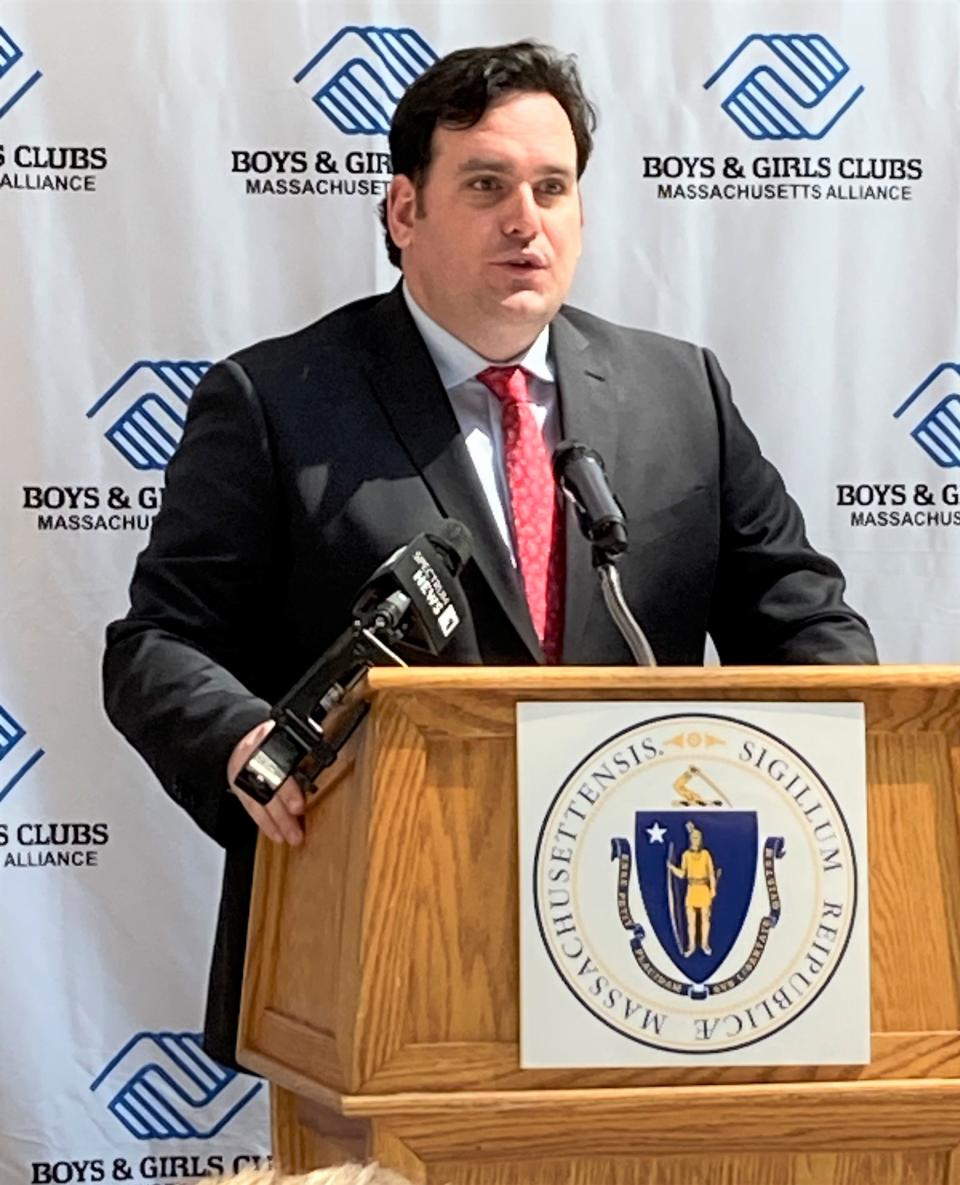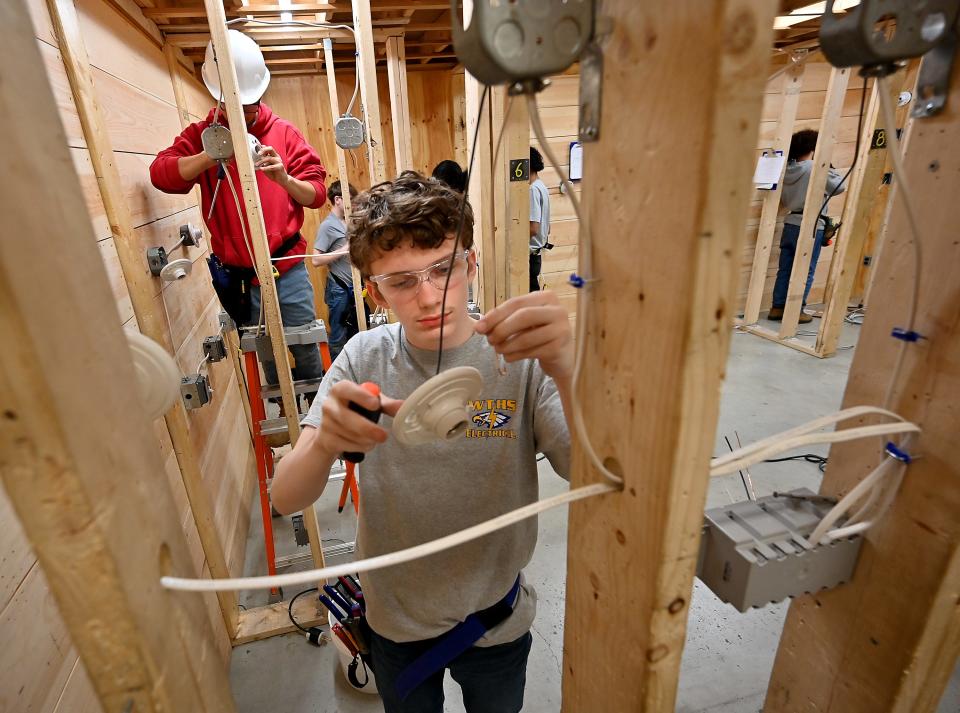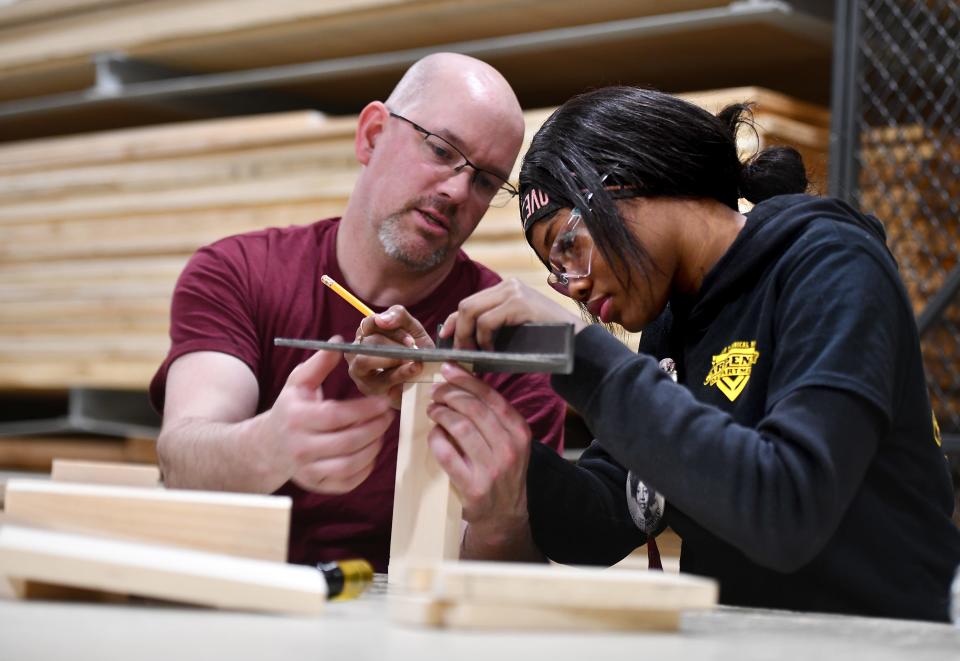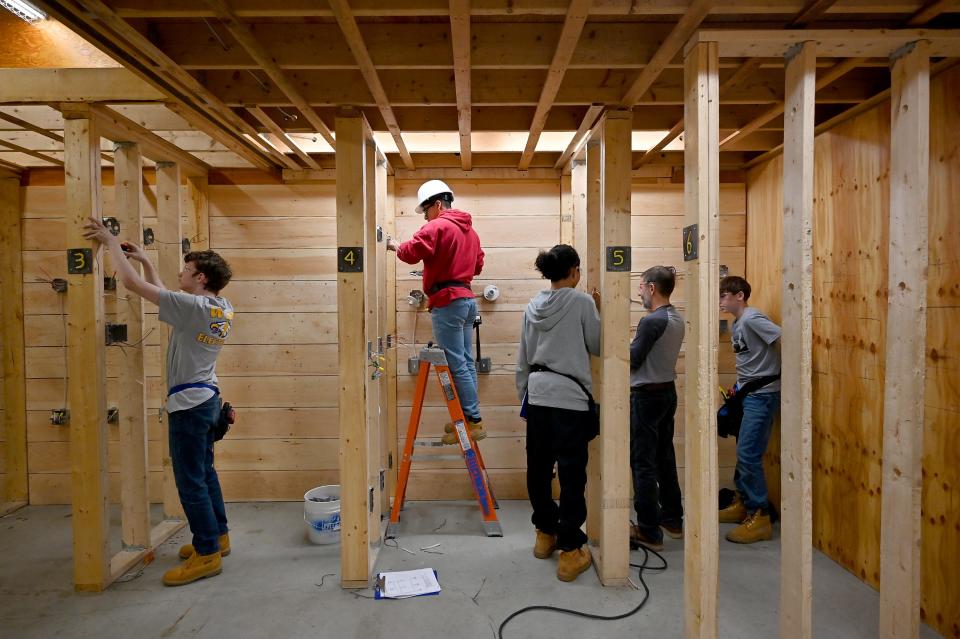Do admission policies used by Mass. voke schools discriminate against protected kids?
Citing bias in the admissions formula used by most of the state’s vocational and technical high schools, lawmakers representing Gateway Cities have filed legislation that would install a blind lottery to ensure students in protected classes have the same access to the institutions as more affluent youngsters, especially those who are on a college-preparatory track.
“We want to bring awareness to this issue that has been unrecognized and unaddressed for decades,” said Rep. Michael Kushmerek, D-Fitchburg, who sponsored the bill with Sen. John Cronin, D-Lunenburg.
“We want to make sure that students in the protected classes receive offers at the same rate as students from higher-income backgrounds,” said Cronin. “Superintendents (of vocation, technical and comprehensive high schools) denying this problem exists do more harm.”

The lottery system would consolidate student applications to the schools and offer students a spot in the school of their choice through the random drawing, ensuring all have equal access and opportunity to land a coveted placement.
At issue is the lack of capacity at many of the schools. The state Department of Elementary and Secondary Education estimates that the waiting lists for the 64 institutions in Massachusetts can range between 6,000 and 11,000 youngsters a year. In addition to the vocational technical schools, some high schools, like Somerville and Medford, offer Chapter 74 programs and are called comprehensive high schools.
There are 52,623 Massachusetts youngsters enrolled in Chapter 74-approved programs. Another 11,037 are enrolled in other vocational and technical programs, according to the state.
Their high graduation rate, close to 100% at some schools, which tops the overall 91% graduation rate for the state’s traditional high schools, coupled with their academic proficiency, on par with traditional high schools, makes them an attractive alternative to the local public high school.
Competition to secure a spot is fierce.
What criteria do career training schools use for admission?
Students apply from middle school and must present their academic grades, their attendance and disciplinary records, secure a recommendation from their guidance counselor and complete an interview with the target school’s admissions officer.
Points are ascribed to each category. More points are awarded for higher grades, for infrequent absences and lack of disciplinary problems. Some schools ascribe 30 to 35 points for the five-question interview, for a total of 100 points.
And dress and presentation matter in the interview.
Pushed aside in the admissions process, activists claim, are students in the protected class — those who identify as of color, English-language learners, students with disabilities and those from low-income households. These are the very students, they argue, that could benefit from as many ways to access education as possible.
Activists suggest the academic success of the vocational/technical institutions can be attributed partially to the schools’ ability to offer spots to those students who already excel academically, based on their admissions policies.

The Vocational Education Justice Coalition, a coalition of education, civil rights and union groups represented by Lawyers for Civil Rights and the Center of Law and Education, filed a civil rights complaint against the state in February 2023 with the U.S. Department of Education's Office of Civil Rights on behalf of four students from Chelsea and Gardner.
“The ball is in the federal court. We hope to push this forward and not spend another school year where the protected classes if students are being left behind,” said Mirian Albert, an attorney with the Lawyers for Civil Rights.
Steps have been taken to revise the system and collect data on its effectiveness. In June 2021, the state adopted new regulations for admissions to ensure transparency for students, families and sending districts.
“The Department of Elementary and Secondary Education is committed to ensuring all students have equitable access to career technical education and continues to work with districts to expand capacity through new programs and career-connected learning,” said Jacqueline Reis, a spokesperson for DESE.
The state routinely reviews schools that offer career and technical education. It collects and analyses data and reviews policies and procedures for compliance with federal guidelines and to ensure that all students have equitable access to career technical education.
Which schools has DESE identified as out of compliance with fed regulations?
After recent DESE reviews, the state will be offering its technical assistance at four schools: Bay Path, Montachusett Regional, Greater Lowell Tech and Greater New Bedford Regional Vocational Tech.

Issues at Greater New Bedford, such as imbalances in student makeup, could result in corrective action that may include changes in admissions policies or practices. These discrepancies could be attributed to the lack of recruiting possibilities in the New Bedford District, with most students attending being drawn from Dartmouth and Fairhaven, two predominantly white Bristol County communities.
As part of its review process, DESE has earmarked $2 million in federal grants over the last three fiscal years to help districts build culturally and linguistically sustainable systems for recruitment, admissions and student success. The agency anticipates having additional funding available in fiscal 2025. The state also provides data tools, professional development and technical assistance, as well as guidance to support districts in implementing new regulations regarding admissions.
Steve Sharek, executive director of the Massachusetts Association of Vocational Administrators, said a blind lottery would not increase the number of open slots nor the percentage of protected class students offered a spot in Chapter 74 programs.
“The whole lottery idea is oversimplified,” Sharek said, adding that it hasn’t even been tested as a pilot program. Sharek predicted it could also wreak havoc with funding formulas determined decades ago and in place for the schools and school districts.

Districts share capital and operating costs for regional technical schools, and changes in apportioning slots could create financial imbalances. Further disturbances in a district’s financial health are affected by students attending vocational schools when they are removed from the local district rolls.
What changes has Worcester made? How have they helped?
Worcester Technical High School, affiliated with the Worcester Public Schools and serving just the city’s youth, changed its admission process in the 2021-22 school year, adopting a tiered lottery (not a blind lottery) admissions process.
According to the district's website, applicants must have earned a grade of 65 or better in English language arts and math. Tiers one through three are determined using attendance — top tier: 10 or fewer unexcused absences in the seventh and eighth grades; tier two: no more than 21 unexcused absences; and tier three: more than 22 unexcused absences.
Discipline and safety records are also considered — tier one: no more than one long-term suspension; tier two: no more than two; and tier three: three or more long-term suspensions. These are for offenses related to drugs, firearms and in-school assaults and violence.
According to DESE, the numbers of protected students attending the Worcester tech programs have increased across the board since the change in admissions from 2020-2021 through this academic year.
These increases are reflected in the numbers on the DESE website:
Students identified as non-English as a first language: 53.5%; 54.8%; 59%.
Students identified as English-language learners: 6.3%; 8.1%; 9.9%
Students identified as low-income: 50.3%; 64.5%; 65.9%
Students with disabilities: 12.5%; 15.7%; 15%
High needs students: 62.5%; 71.7%; 72.4%
Despite the pressure to change admissions policies, Sharek believes the interview is a necessary part of the process.
“We want to know whether they are applying because they have a boyfriend or girlfriend in the school, whether they are fleeing from disciplinary issues, gang violence, or because mom or dad told them to apply,” Sharek said.
It’s important, he said, to ascertain whether the student has the determination, ambition and commitment to be successful in the vocational technical school setting. It’s not like a traditional school — students focus on academics one week, practical learning the alternate week.
“We ask why they want to go to a vocational technical school and consume precious funds and teacher time,” Sharek said.
Post-high school surveys conducted by DESE indicate that the majority of graduates of career training programs, 98.2%, are in “positive placements.” This includes 50% who go on to further educational opportunities, and others in postsecondary education that also includes apprenticeships and technical training.
Kushmerek likened using career training programs as a step up to college as a misappropriation of funds — using services intended to launch students into the workforce as an entry into college. The maneuver also deprives the Massachusetts workforce of skilled laborers at a time when employers are desperate for workers.
Both Cronin and Kushmerek suggest that many parents use the vocational system as a steppingstone to enhance their child’s college applications.
“They have become the school of choice for the children of doctors and lawyers in Central Massachusetts,” Cronin said. And it’s not just anecdotal.
Lewis Finfer, director and community organizer for the Massachusetts Action for Justice and also with the Vocational Education Justice Coalition, said the head of a carpentry internship program asked 10 of his students what they planned to do with their careers when they graduated. “All 10 said they were planning to go to college,” Finfer said.
The admission criteria skews in favor of certain applicants — those with the parental support systems and tradition of scholarly achievement that prepares them for academic success. There are racial and class biases, Finfer said.
“More privileged students are more likely to be prepared for the admissions process and supported through it and throughout their academic careers by their parents,” Finfer said.
Kushmerek said both his in-laws were products of the vocational school system.
“My father-in-law was struggling, on the verge of dropping out of a traditional high school. He found a path through the vocational system,” Kushmerek said. The man graduated at 18, a union laborer, with a shot for the first time at a middle-class life. “He’s still a union laborer. The system operated as it should.”
Even as Sharek suggests using a surgical approach to changing the admissions policy targeting those school that are out of compliance, and others advocate a lottery, everybody agrees the solution is to expand the number of slots available to students who seek to attend vocational technical high schools in Massachusetts.
The solution? Expand capacity
Sharek suggests funding expansion efforts to $100 million a year over three years in districts with waiting lists and where the labor market is desperate for an infusion of skilled workers. Gateway Cities would be prioritized, and students would be connected to jobs.
The targeted grant program to expand capacity where it is most needed would go a long way to resolving issues with admission policies as well as reinforcing workforce development.
“Even where the budget is tight, the state could find funds in a $58 billion budget for a targeted grant program,” Sharek said. “Expansion would ease the pressure on the system, reduce waiting lists and direct workers into the labor market.”
This article originally appeared on Telegram & Gazette: Admissions process to Mass. voke schools biased, advocates say

